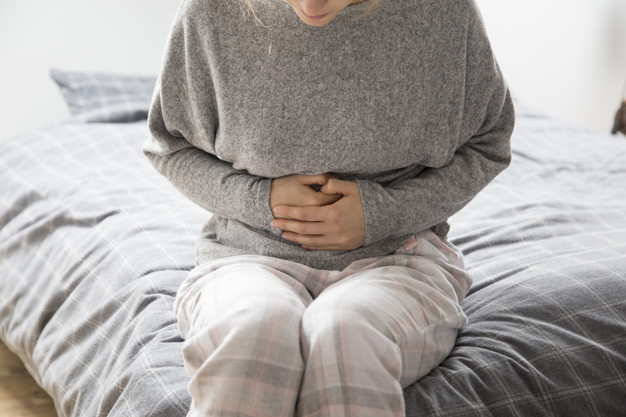You might not have heard the term “cholesterolosis” before, because it is pretty unknown. But being unknown doesn’t mean it is uncommon. Many people have it and misinterpret it as mere gallstones. The buildup of cholesterol esters and them sticking to the walls of an organ characterized cholesterolosis. These then form polyps.
Cholesterolosis most commonly affects the gallbladder. Gallbladder; a small pear-shaped organ responsible for storing bile and helping in converting cholesterol and fats into cholesteryl esters. Cholesteryl esters aid digestion and cause the cholesterol and fatty acids transport throughout the body. In cholesterolosis, these cholesteryl esters build up and form polyps by sticking to the walls of the gallbladder.
Cholesterolosis often occurs in adults and rarely in children. But the reason behind its lower prevalence in children could be the lack of screening in them, which may leave the disease undiagnosed and untreated.
Types of Cholesterolosis
Have you ever heard the term strawberry gallbladder? Well, it is a simple term for cholesterolosis. Cholesterolosis has two types; localized and diffused. Individual polyps characterize localized cholesterolosis. Whereas diffused cholesterolosis, also known as strawberry gallbladder means that there are groups of polyps.
For you to understand the condition better, first you must know all the terms associated with it. So here is a guide for that too. Cholesteryl ester, which marks the diagnosis of cholesterolosis is simply a dietary lipid. These pack more lipoproteins in them and are used for more efficient cholesterol transport throughout the body.
Polyps which result from cholesteryl ester buildup are defined by the abnormal and excessive growth of tissue. These appear as small flat bumps or tiny mushroom stalks.
The Science Behind It
The presence of lipid-containing macrophages in the lamina propria of the gallbladder characterize this disease. The etiology behind this disease is very poorly understood. But according to a study conducted in 2012, the accumulation of cholesterol esters and triglycerides causes increased hepatic synthesis of these lipids in the gallbladder. Normally, the gallbladder can absorb non-esterified and free cholesterol from the bile. The cholesterol is esterified in the ER (endoplasmic reticulum) and lipid droplets are formed. These droplets are released into the intercellular space where they are phagocytosed by macrophages. On the other hand, patients with cholesterolosis have supersaturated bile which suggests that this disease results from increased cholesterol uptake from supersaturated bile.
Another theory hints at the probable defect in the macrophages. These defected macrophages fail to metabolize or excrete cholesterol absorbed from the bile. If seen under a microscope, the lipid deposits inside the gallbladder appear as yellow flecks against a dark green background. The appearance is quite similar to strawberries, hence the name “strawberry gallbladder”. In severe cases, these deposits may form polypoid excrescences that project into the lumen. These lesions are usually small but can be large enough to be detected by simple imaging techniques.
The hallmark of cholesterolosis is the accumulation of macrophages in an expanded lamina propria. This appears as a thickened fold or polyps. The mucosa inside can be normal or inflamed. The inflammation usually occurs in patients with coexisting gallstones.
Cholesterolosis Symptoms
Cholesterolosis is a symptomless disease. A very few people that report notice some symptoms, report the symptoms to be strikingly similar to that of gallstones. Due to the similarity in symptoms, we sometimes misdiagnose cholesterolosis as gallstones. This pseudo diagnosis can be a major hindrance in the receival of proper treatment.
Causes
The build-up of cholesteryl esters mark cholesterolosis, so the simple cause behind this is the unusually exorbitant amount of cholesteryl esters. To get deeper into the causes of cholesterolosis, one must find out the reasons behind excessive cholesteryl esters. A definite cause of these esters is yet to be determined by scientists and researchers. There has been a lot of debate regarding the cause behind the buildup of these esters and here is the narrowed down list of the suspected culprits. We associate excessive alcohol consumption with all things that might go bad inside your body and gallbladder disease is not different from others, in this situation.
- Smoking: It has long been associated with the buildup of plaque inside the body pipes and organs. Smoking is responsible for the buildup of cholesteryl esters in the gallbladder too.
- Elevated serum cholesterol levels: This one might be the most obvious cause. As cholesteryl esters are made up of cholesterol, excessive cholesterol will lead to excessive production of these esters leading to a buildup of these inside the gallbladder walls.
- Elevated BMI: The ill effects of extra weight exacerbate its effect on the looks only. It affects everything, from your heart to your nails. In this case, it affects your gallbladder health for the worst. High amounts of fat in the body will obviously lead to fat accumulation in the organs.
If we were to narrow down all the causes to just one main cause, it would be the high amount of saturated cholesterol inside the body. Now the main cause of this abundant saturated cholesterol is yet to be determined. Vaguely speaking, the cause of cholesterolosis is also the degenerative process of aging.
Cholesterolosis Diagnosis
Usually, you don’t get diagnosed with cholesterolosis unless you have another related disease like gallstones. The only way to diagnose it is by using imaging tests like ultrasound, MRI (magnetic resonance imaging). This condition can also be discovered after a cholecystectomy.
Cholesterolosis Risk Factors
Cholesterolosis increases the risk of gallstones. But there is not enough evidence to support the claim. This condition is likely to be misdiagnosed as “adenomyomatosis” because both look very similar in image testing. A detailed MRI can make your doctor able to differentiate between the two.
This condition, if courts in children can be a cause of other medical complications. All of these conditions cause the build-up of fat, either inside an organ or blood vessels. These conditions include.
- Pancreatobiliary malunion-destroys the bile duct.
- Metachromatic leukodystrophy- causes an accumulation of fat in different cells.
- Peutz-Jeghers syndrome- causes the formation of noncancerous polyps in the gastrointestinal tracts.
Cholesterolosis leads to pancreatitis
People believe that gallstones are a risk factor for pancreatitis. Although the studies carried on the topic show little evidence of the relationship between the two. Cholesterolosis usually occurs with gallstones. Both of these conditions have similar causal factors. This association has lead experts to hint at the possible relationship between cholesterolosis and the development of acute pancreatitis. Acute pancreatitis is the inflammation of the pancreas that sets suddenly. It comes with extreme abdominal pain, but the pain subsides after some time.
As polyps are a major indicator of cholesterolosis we will use them as an indicator of the disease. An early study suggests that polyps can be a cause of acute pancreatitis. This conclusion was drawn by studying a patient that underwent cholecystectomy. His reports showed the presence of cholesterol polyps in the mucosa of the gallbladder. The results also suggested a wider than usual bile duct. According to the researcher, the polyps must have sloughed off leading to a wider bile duct. This eventually led to the development of pancreatitis. Other studies also support this conclusion.
On the contrary, some studies suggest that cholesterolosis is simple a marker of gallstones that may have passed undetected. These researchers failed to find a direct relationship between cholesterolosis and pancreatitis among patients without gallstones. They also made an astounding revelation, that patients with cholesterolosis had significantly low levels of lipase. This suggests that cholesterol polyps may actually show a protective effect against pancreatitis.
According to recent research published in 2018, the cholesterol polyps acted like gallstones and caused the obstruction of the pancreatic duct. This temporary obstruction leads to pancreatitis. But there are other causes of pancreatitis such as autoimmune pancreatitis, alcohol use, microlithiasis, and biliary sludge.
Cholesterolosis Treatment
This condition requires no immediate treatment because it is mostly asymptomatic. It is important to do a biopsy of your polyps, just to be sure that they are benign.
Some simple lifestyle choices such as a healthy diet and no smoking can be prevent and treat this condition. Although there is no scientific research that claims a proper treatment of this disease, the following can help a bundle.
- Maintaining a healthy BMI
Losing weight, if overweight - Reducing the intake of dietary cholesterol
- Not smoking
- Reducing alcohol consumption to minimal.
Cholesterolosis Prevention
As mentioned earlier cholesterol polyps are very similar to gallstones. Both of these conditions have similar causes so the prevention of the two is also similar. A sensible and well-calculated diet is the best way to prevent cholesterolosis. If you are at a high risk of gallstones or cholesterolosis you must avoid all sorts of fad and crash diets. Restricting your calories to less than 800 kcal can be really harmful too.
1. Add Fibers
Your best bet is to add a lot of fibers to your diet. Fruits, raw vegetables, dry beans, cooked beans, whole grain cereals, oatmeal, and brown rice can be your best friends.
2. Limit Fat
As suggested by the name cholesterol polyps directly link to the buildup of fat. So limiting your fat intake is of primitive importance. A high fiber diet if coupled with a low-fat diet can keep the bile cholesterol in liquid form. It is important that you don’t cut out fat abruptly. This will disturb your body’s normal functioning. You should not cut off fat altogether because too little fat can also result in gallstones and cholesterolosis.
3. Take Olive Oil
I would advise you to take a moderate amount of olive oil. 2 tablespoons per day is the recommended amount and may actually lower your chances of developing gallstones or any similar disease. The prevalence of gallstones and cholesterol polyps is remarkably low in areas where people consume olive oil daily. A special compound in olive oil is responsible for its positive effects on the gallbladder and overall health.
4. Take Lecithin
Another surprising substance that may help lower the incidence of cholesterol polyps is lecithin. It is a natural substance. That is a thickener in mayonnaise, ice creams, and several other foods. You will find Lecithin in a number of foods that include eggs, milk, chocolate, soybeans, and oatmeals. Even though you can get enough lecithin from your daily healthy diet, supplements are always available. You can take 500 to 1000 mg daily, or as prescribed by your doctor.
Your body and every organ of it is a temple you should respect and worship. It is important to take all the necessary steps to maintain good health.
If you think this post is helpful for you please comment and share.





